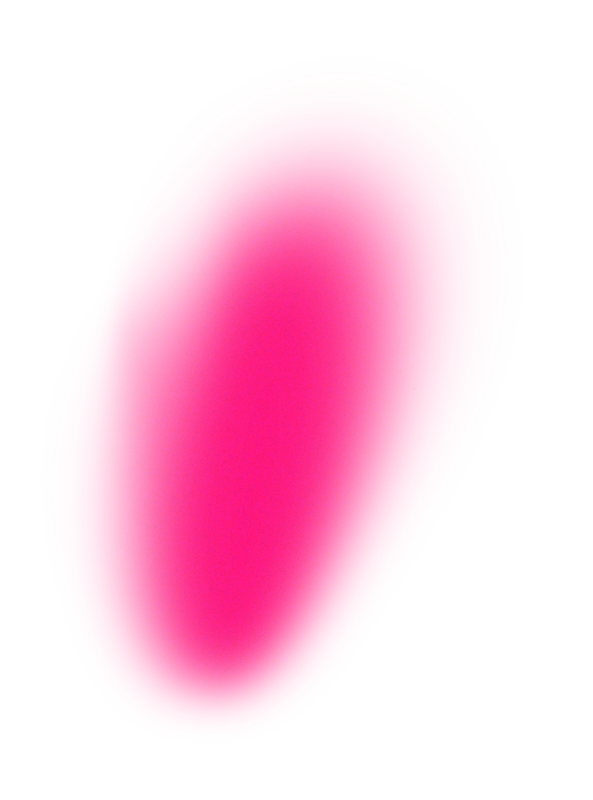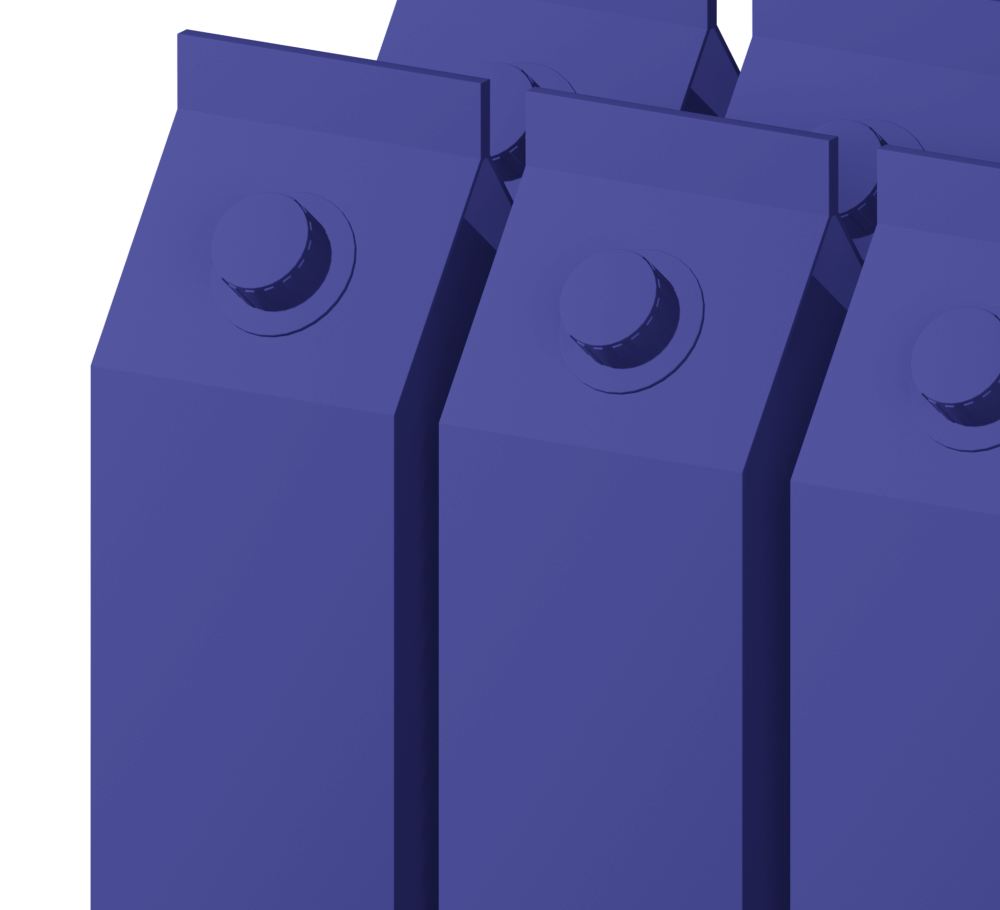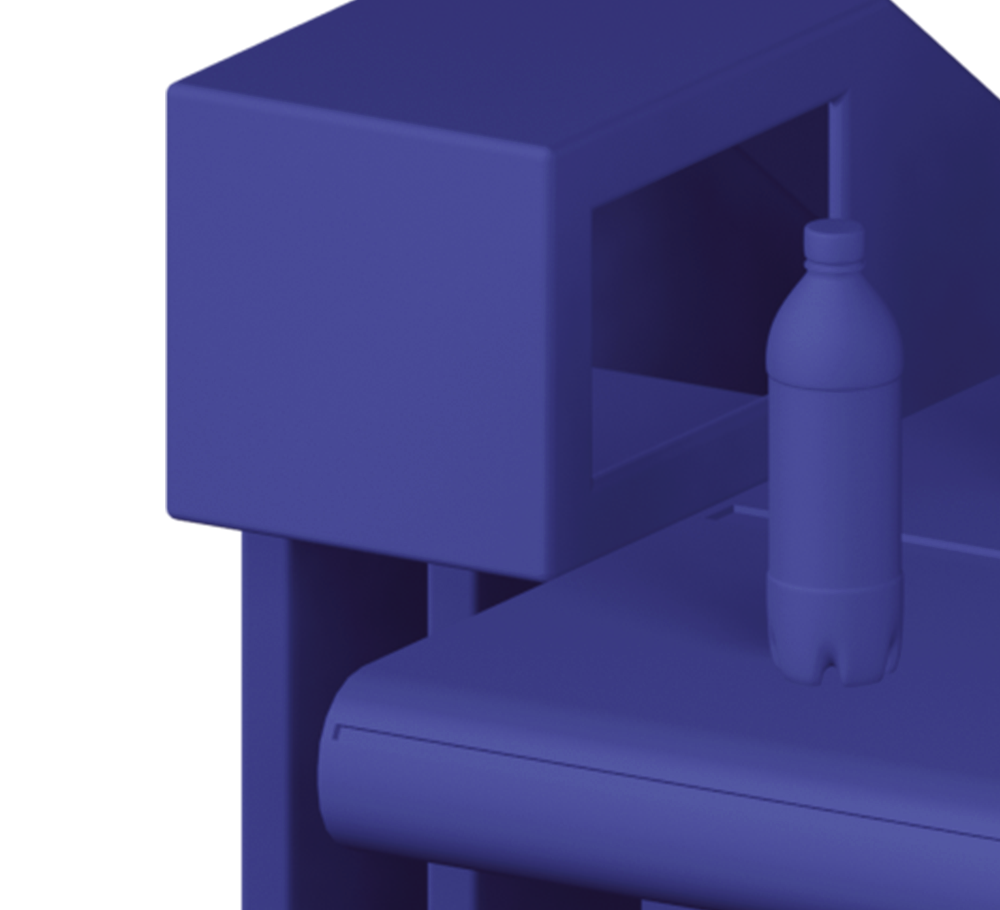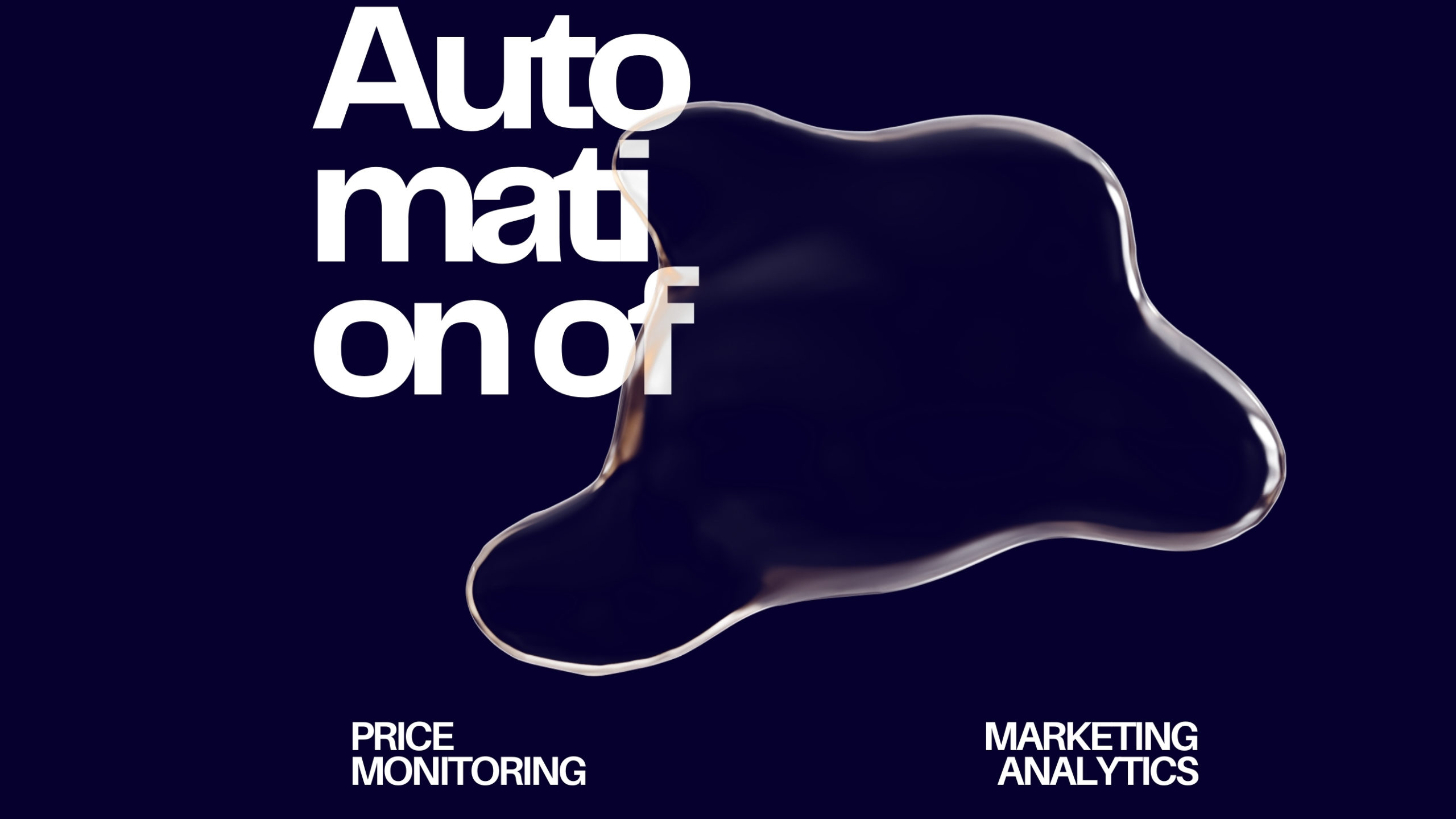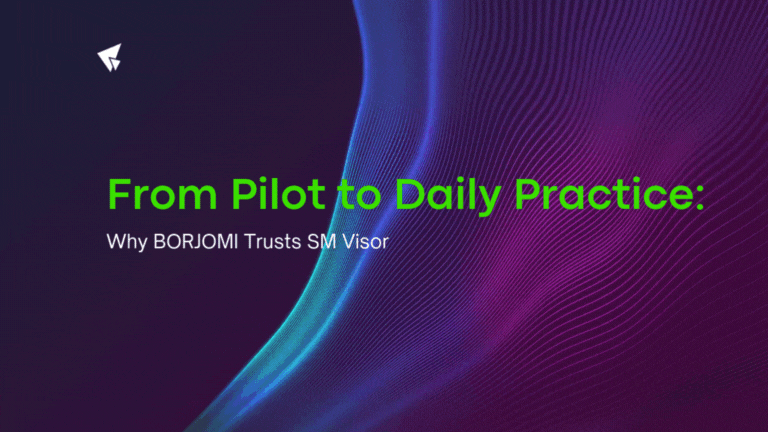
One of Our First Clients: The BORJOMI Success Story with SM Visor
BORJOMI, a globally recognized brand, was among the very first companies to start working with us. For the past seven years, they’ve been using our SM Visor system to monitor product presence and compliance across retail locations. We invited Alexey Ivanov, IT Product Manager at the company’s Information Technology Department, to share his experience with SM Visor and reflect on our collaboration.
Why Automation Became Essential
Initially, the field agents’ work in stores was extremely time-consuming, and their reports often lacked accuracy. Merchandisers recorded shelf data manually, making it impossible to verify the information in real time. A major challenge was the ease with which agents could manipulate or falsify data — and unfortunately, many did. Technically, auditors could be sent for spot checks, but when operations cover the entire territory of Russia, such an approach becomes unmanageable. Verifying the work of thousands of agents would require enormous resources.
This pushed us to look for technology-driven solutions that could help address these issues and ultimately improve performance metrics.
Around that time, we came across emerging recognition systems designed to optimize agent behavior at the point of sale. Naturally, we were intrigued. We started by piloting an international system. However, after testing, we had serious doubts. Working with a foreign provider meant paying in foreign currency and dealing with a very rigid structure. Any request for a custom feature required lengthy negotiations and documentation — with no guarantee our needs would be met.
So we turned our attention to domestic providers. We launched a tender and began reviewing local solutions.
Why We Chose SmartMerch
Among the participants was a newly launched company, SmartMerch. Their CEO, Maksim Arkhipenkov, impressed us with his confidence in the product. At the time, SmartMerch didn’t have contracts with major clients and couldn’t showcase any success stories. What they had was the product itself — SM Visor. But once we tested it, we realized: this was exactly what we needed.
The key feature that set SM Visor apart from other systems was its image stitching capability. This allows agents to take multiple photos that the system then combines into a panoramic “realogram.” Competing systems lacked this feature, leaving room for fraud — for example, agents could upload the same photo multiple times, pretending to have covered an entire shelf. SM Visor eliminated this risk by making such manipulation impossible.
In the end, unique functionality mattered more than case studies or big names. We signed a contract and launched a three-month pilot.
Artur Markaryan, CPO at SmartMerch:
Our deep expertise in the FMCG sector allows us to clearly identify the core challenges our clients face and to build our products around their business needs and each individual user — not just around tools. We were the first on the computer vision market to introduce photo stitching because we understood that both we and our partners needed to see the entire shelf. This provides not only a clear view of product placement, KPI compliance, and competitor presence, but also offers a reliable check on the performance of our system itself.
Our mission goes beyond building a product — we aim to ensure data accuracy and reliability. Today, SM Visor is not just a service — it’s a strategic instrument. The data it provides supports everything from KPI setting and performance tracking to promo campaign planning, production decisions, and commercial negotiations. Without SM Visor, companies simply don’t see the full picture at retail — which leads to inefficient resource allocation, wasted promotional budgets, and weak positioning in negotiations.
We cannot afford to let unreliable data undermine our clients’ business performance. That’s why our mission is to fully eliminate the human factor from data collection and ensure its integrity.
Transparency is the key to effective decision-making, and SM Visor delivers it through a powerful suite of automated tools. At the same time, we go far beyond just one product. Today, the SmartMerch portfolio includes nine solutions — from production defect detection to a unique chatbot that performs mathematical calculations and searches through corporate knowledge bases, as well as an advanced SFA system featuring planogram compliance and in-visit KPI guidance.
Implementing the System: Challenges Along the Way
During the pilot phase, we visited retail locations together with our field agents, took photos, and monitored how accurately the system processed them. We had to travel to virtually every region to conduct in-person training and demonstrate how to photograph shelves correctly so that SM Visor could recognize products and return accurate data.
While the system’s functionality was easy to grasp, we initially encountered some resistance from merchandisers. Many of them, unfamiliar with recognition technology, complained that it was inconvenient or “didn’t work.” However, we could clearly see that visit durations were decreasing and that the speed of data collection — and, as a result, decision-making — was increasing. In that context, agent complaints became less significant. After all, people often react skeptically to major changes at first.
We frequently received messages from merchandisers claiming the system was malfunctioning, refusing to start, or simply not working. But when we arrived to investigate, everything would suddenly be functioning normally. We suspect that in some cases, these complaints were a cover for attempted fraud — some employees, having become used to a lack of oversight, were simply trying to simulate work instead of actually doing it.
Seeing the Results Early On
We began noticing the key benefits of SM Visor as early as the pilot phase — and those early results played a decisive role in our decision to move forward with full-scale implementation.
1. Faster Processes. With the help of the recognition system, each agent can now visit significantly more stores. For example, if previously an agent could cover 10 stores a day, now they can easily visit 15. Knowing that their work is being monitored in real time through their mobile devices, agents are more focused and no longer waste hours on the job.
Supervisor efficiency has also improved. Previously, they would spend up to 60% of their time reviewing shelf photos and providing delayed feedback to merchandisers. Now, the system analyzes the photos automatically and flags issues — all the supervisor needs to do is focus on improving shelf execution.
2. More Constructive Dialogue with Supervisors. In the past, whenever data inaccuracies were flagged, the usual response would be that the agent had simply “forgotten to check a box,” while the shelves were supposedly fine. Many supervisors defended their agents because they were personally invested in keeping performance metrics high. With SM Visor, that’s no longer possible: if a product is missing from the shelf photo, it simply wasn’t there — no more excuses or data manipulation.
3. Fact-Based Conversations with Retail Chains. When discussing assortment compliance or trying to understand why a product is missing from shelves, it’s difficult to rely on questionable data. A product might be missing due to breakage, delivery failure, or other issues — but without real-time insights, it was all speculation. Now we have concrete, up-to-date information about what’s happening in each store.
These data also help us plan assortment and restocking more precisely, as we can track which SKUs are in demand at each location.
Another important feature is the system’s ability to detect price tags — or their absence. This detail significantly affects sales: many shoppers won’t purchase a product if the price isn’t visible. Previously, checking price tags meant manually going through every photo. Now, SM Visor does it automatically — and that’s a real game-changer.
4. Real-Time Data and Faster Decision-Making. Before, we’d get data with a one-week delay. Now, everything is available within minutes. Our decision-making speed has increased by 30–40% on average. We can instantly see what’s happening at each point of sale and take action — even calling a regional manager immediately if needed. What used to take three weeks — verifying reports, confirming data accuracy, escalating issues — now takes just a few clicks. The right data is in front of us, right when we need it.
SmartMerch Listens — and Adapts to Our Needs
We’ve been working with SmartMerch for seven years now, and we haven’t found another solution worth switching to. Beyond all the functional advantages, what we value most is their flexibility and customer-centric mindset. We don’t have to go through endless rounds of approvals just to, say, change the color of a button — updates are implemented quickly.
We know that whatever request we bring to SmartMerch, they’ll help us make it happen. For example, they developed a flagging system specifically for us that evaluates the quality of shelf photos — whether they’re cropped, if an agent has tried to cover part of the shelf with a dark cloth (yes, that has happened), and so on. This system significantly reduces fraud risks and ensures that photos are good enough for accurate recognition.
Tailored Features That Match Our Needs
At our request, additional features were also added over time — such as shelf gap detection, simultaneous recognition of two categories (like water and soft drinks), and equipment type identification (e.g., rack, refrigerator, etc.). Step by step, we reduced both the risk of fraud and the likelihood of recognition errors. In the end, we arrived at a product that fully meets all our operational needs.
Another major advantage is the system’s minimal technical requirements. SM Visor doesn’t require any special equipment — it runs smoothly even on standard, budget-friendly smartphones. This allows us to optimize costs and avoid unnecessary tech investments.
Transforming the Way We Work
When we first implemented SM Visor, our goals were purely financial and business-driven. Not only did we meet those goals — we surpassed them. The optimization brought about a real shift in our corporate environment. Employees became more focused and disciplined, with a clear orientation toward results. And thanks to transparent performance data, we’re now able to evaluate their efforts objectively.
Today, with this system fully integrated into our daily operations, it’s hard to imagine how we used to manage without it — spending millions of man-hours on routine, repetitive tasks. It feels like we’ve left behind a kind of digital Stone Age — and we have no desire to go back.
